Two of the three Nine-Piece Lotus Sculptures in Vietnam are national treasures and are being preserved in Hai Duong. Both of these sculptures demonstrate the masterful artistic talent of our ancestors.
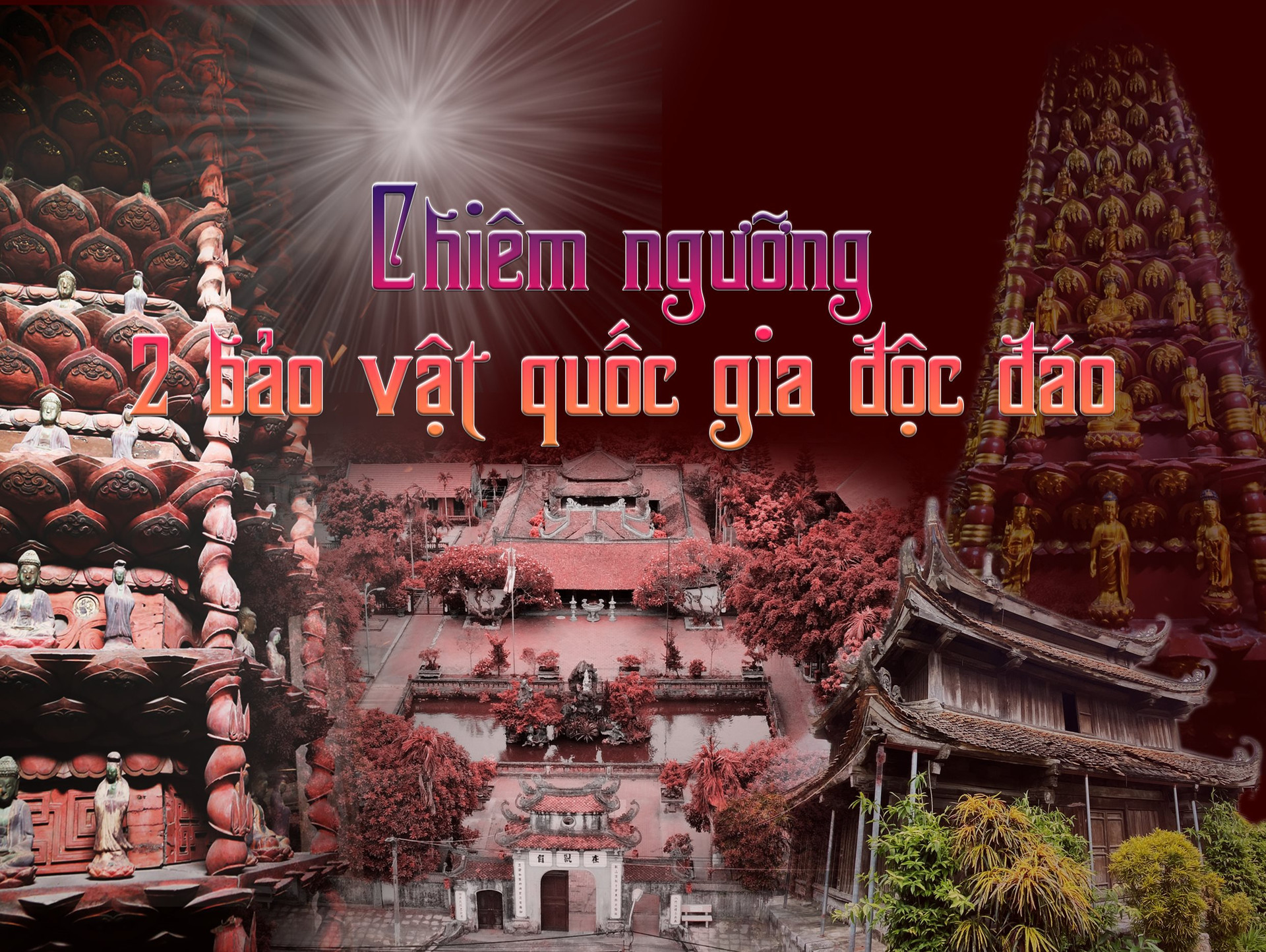
2 Among the three Nine-Piece Lotus sculptures in Vietnam, these are national treasures and are being preserved in Hai Duong. Both of these sculptures demonstrate the masterful artistic talent of our ancestors.
.png)
Among the tens of thousands of pagodas across Vietnam today, there are only 4 Nine-Piece Lotus Towers left, of which 3 are in Hai Duong, at Con Son Pagoda (Chi Linh), Giam Pagoda (Cam Giang) and Dong Ngo Pagoda (Hai Duong City). The remaining Nine-Piece Lotus Tower is currently preserved at But Thap Pagoda (Bac Ninh Province). Of the 4 Nine-Piece Lotus Towers mentioned above, 3 are recognized as national treasures, including the Nine-Piece Lotus Towers at Giam Pagoda, Dong Ngo Pagoda and But Thap Pagoda. The Nine-Piece Lotus Tower at Con Son Pagoda was recently restored, near the remains of the Nine-Piece Lotus Tower that once existed here but was destroyed by time, rain and sun.
Giam Pagoda, also known as Nghiem Quang Tu, is located in the east of Cam Giang district and was built in 1336. Perhaps, there are few pagodas in Vietnam that have been completely moved from one place to another but still retain the architectural values, scale and artifacts like Giam Pagoda.
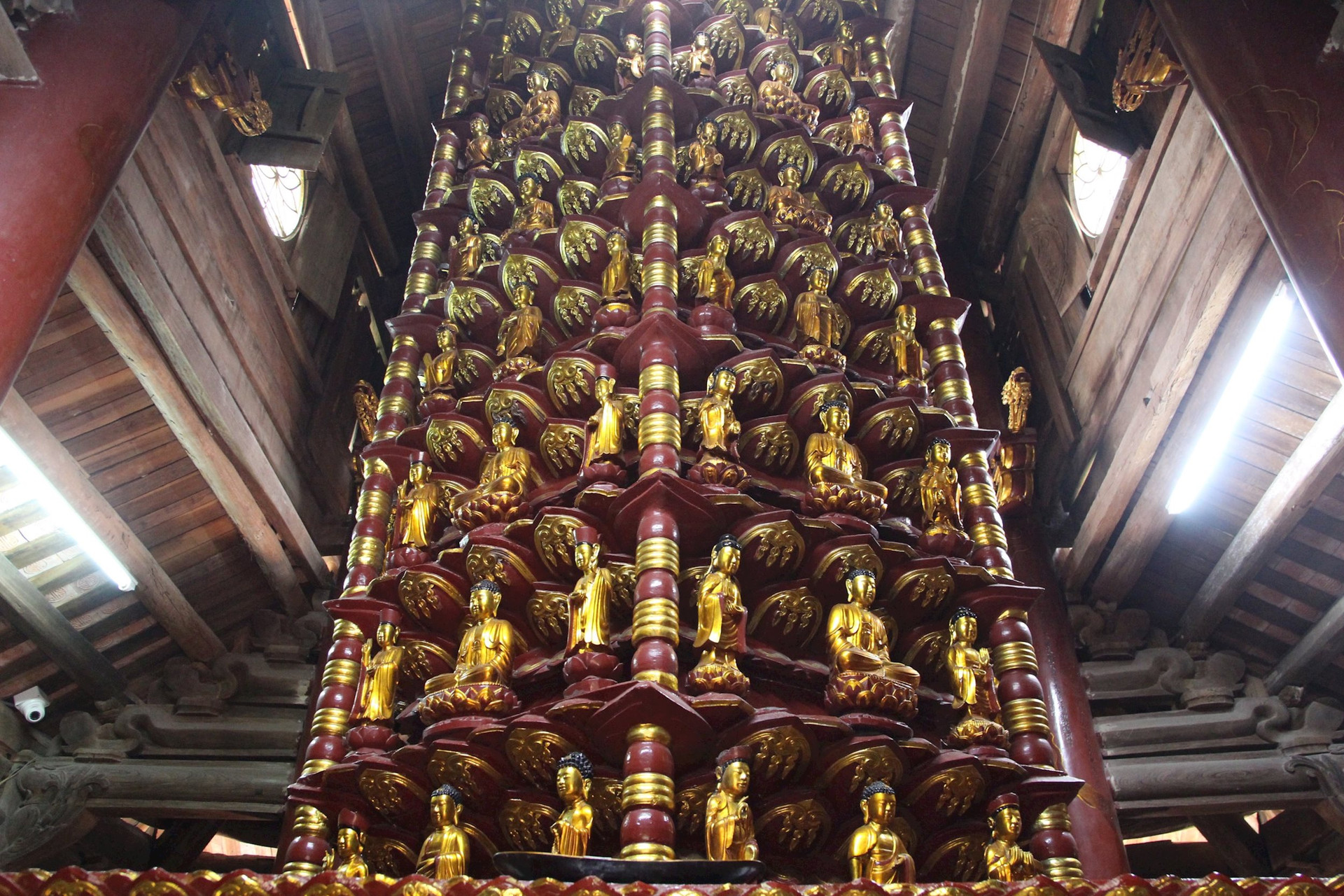
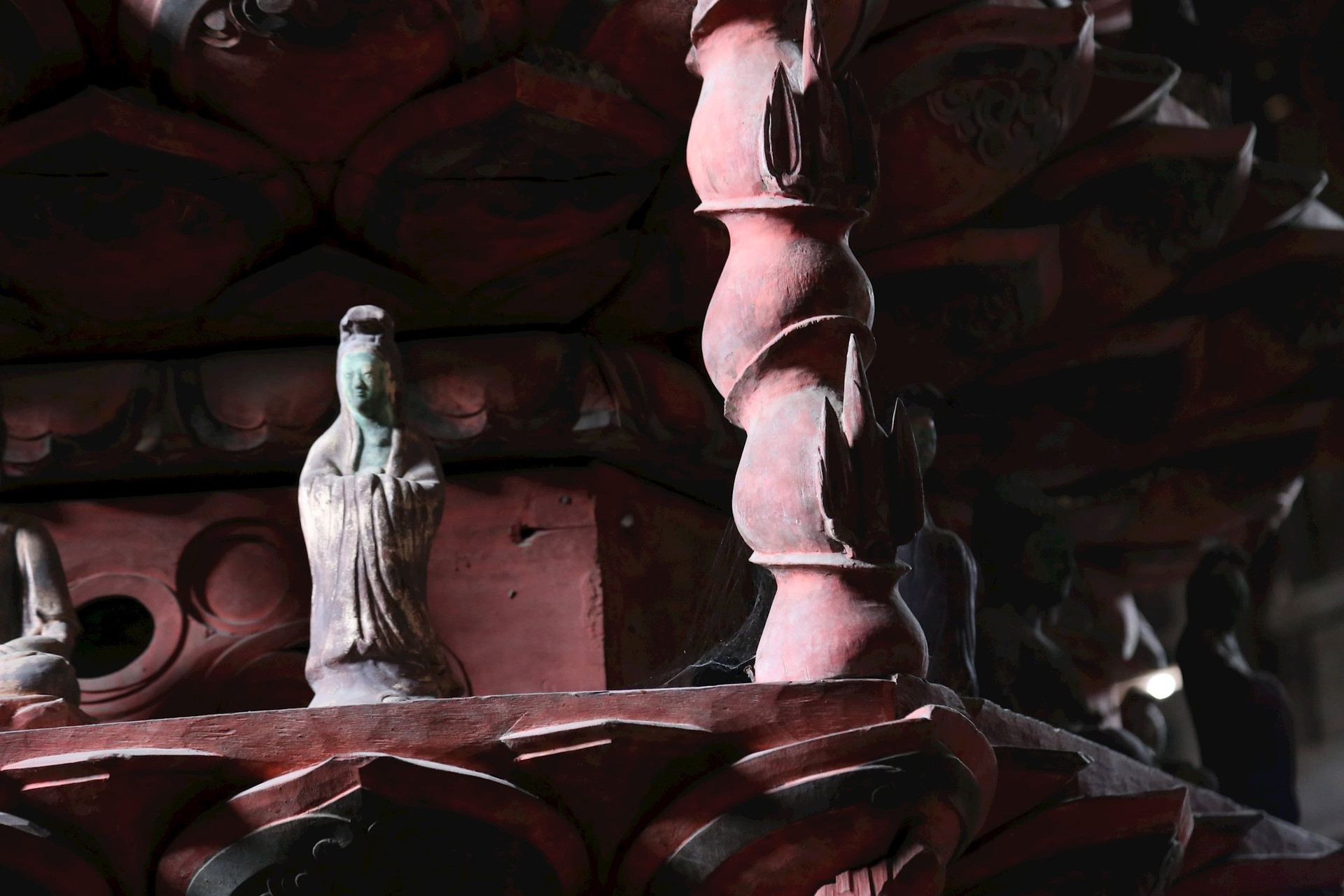
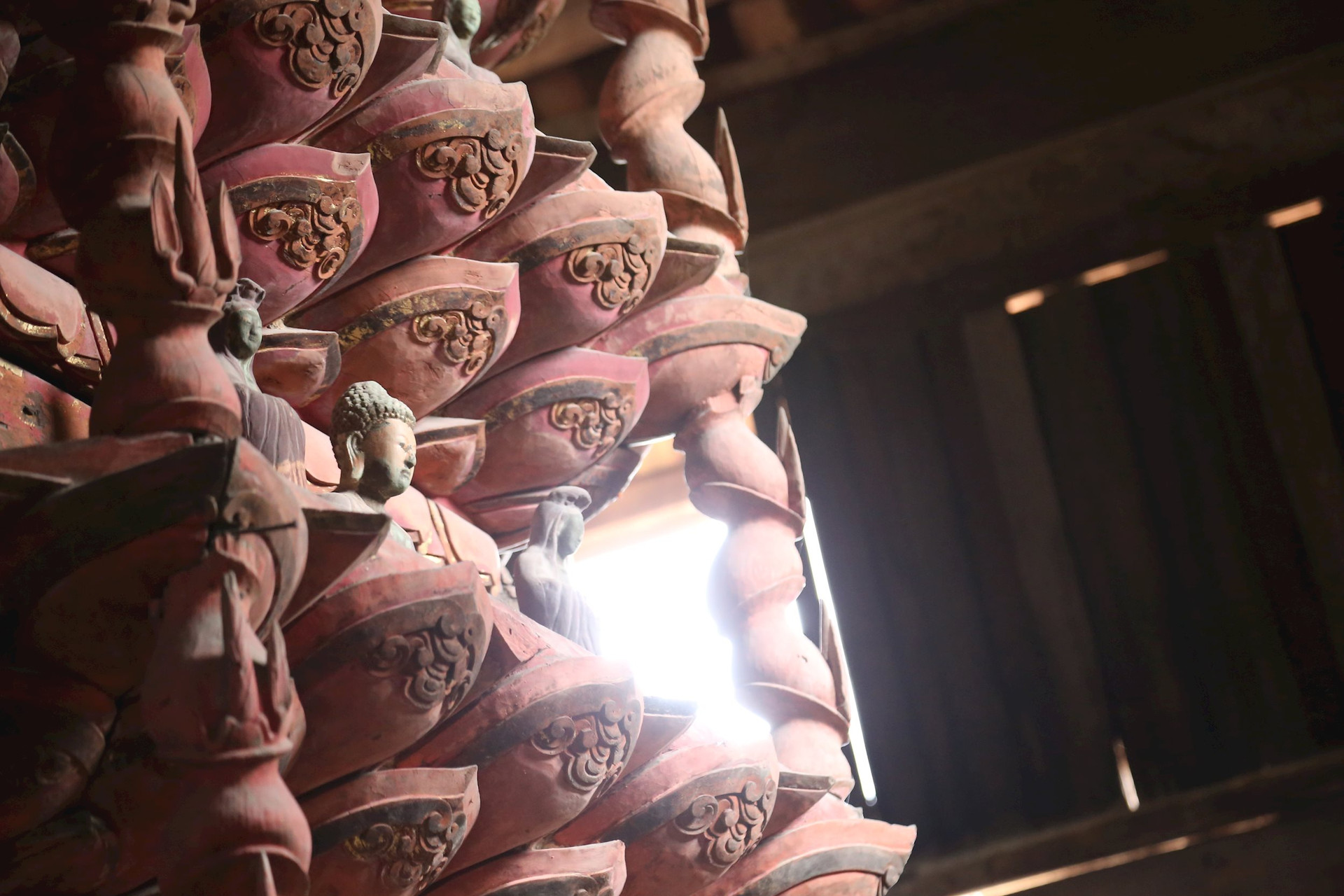
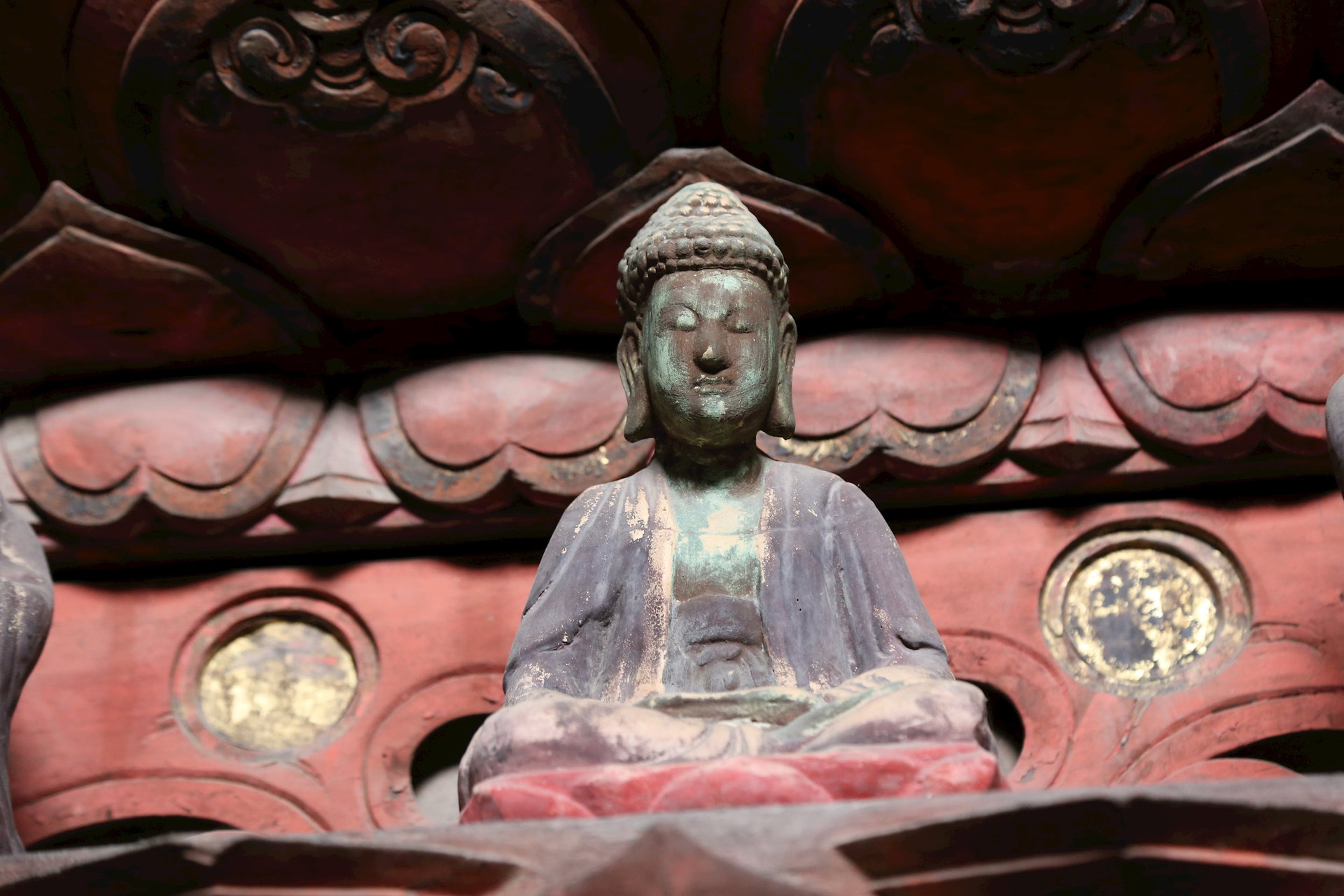
In April 1970, to protect the pagoda from floods, Giam Pagoda was moved from Duc Chinh Commune (in the same Cam Giang District) to Cam Son Commune (now Dinh Son Commune), nearly 7 km from its old location. Among the thousands of artifacts and architectural details that followed that journey, there was also the present-day Nine-Plate Lotus Hall. This is a rare artifact in Vietnam and has been protected by the State.
The Nine-Piece Lotus Hall of Giam Pagoda is located in the house of the monks, right in front of the ancestor's house.
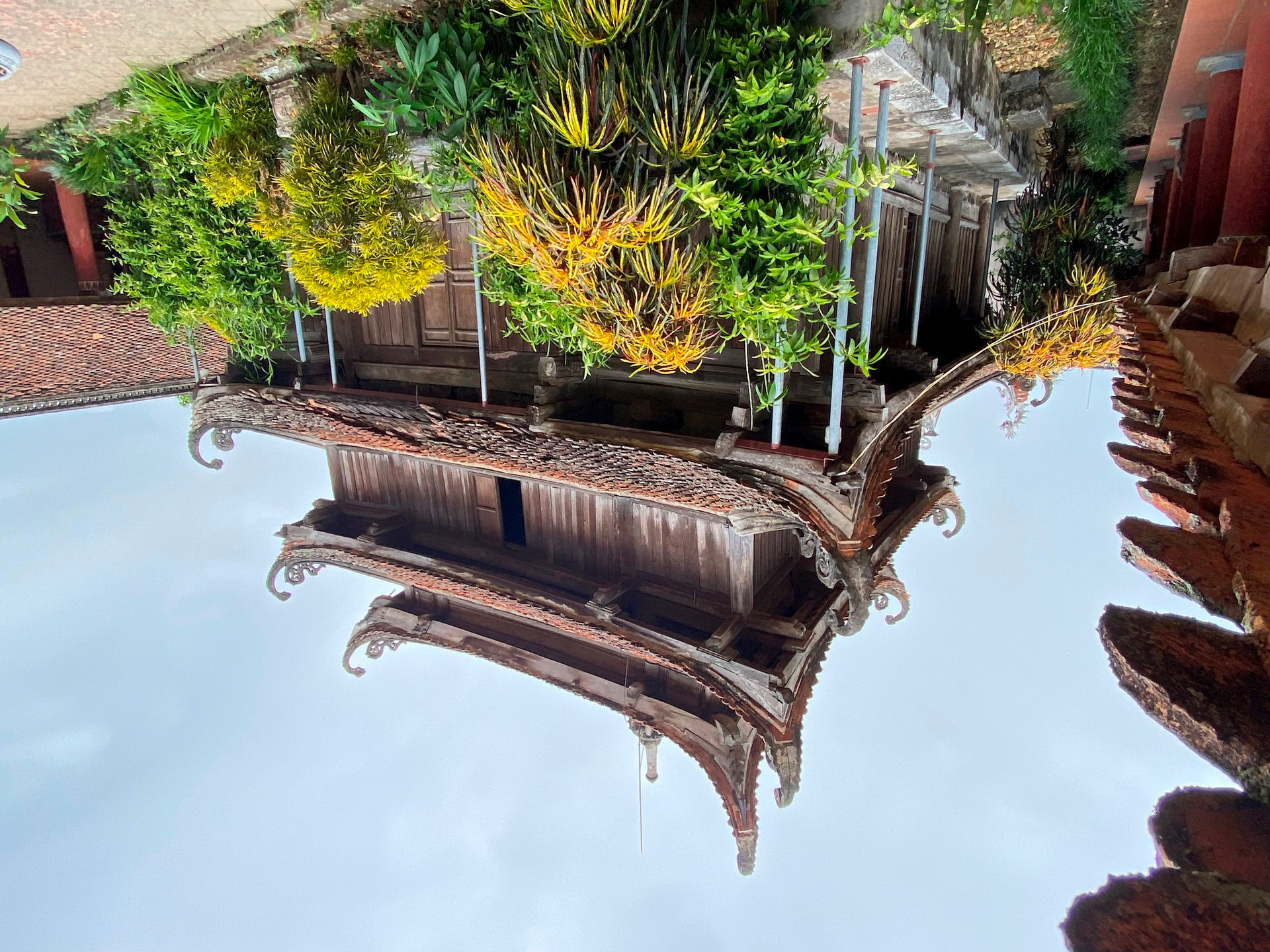
The Nine Lotuses of Giam Pagoda are made of wood, in the shape of a lotus hexagon. After more than 3 centuries, although the paint has faded over time, it is still quite clear, despite its dull color. The Nine Lotuses of Giam Pagoda have 9 floors, each floor has 18 Bodhisattvas and 54 floors of lotus petals, carved with vivid motifs.
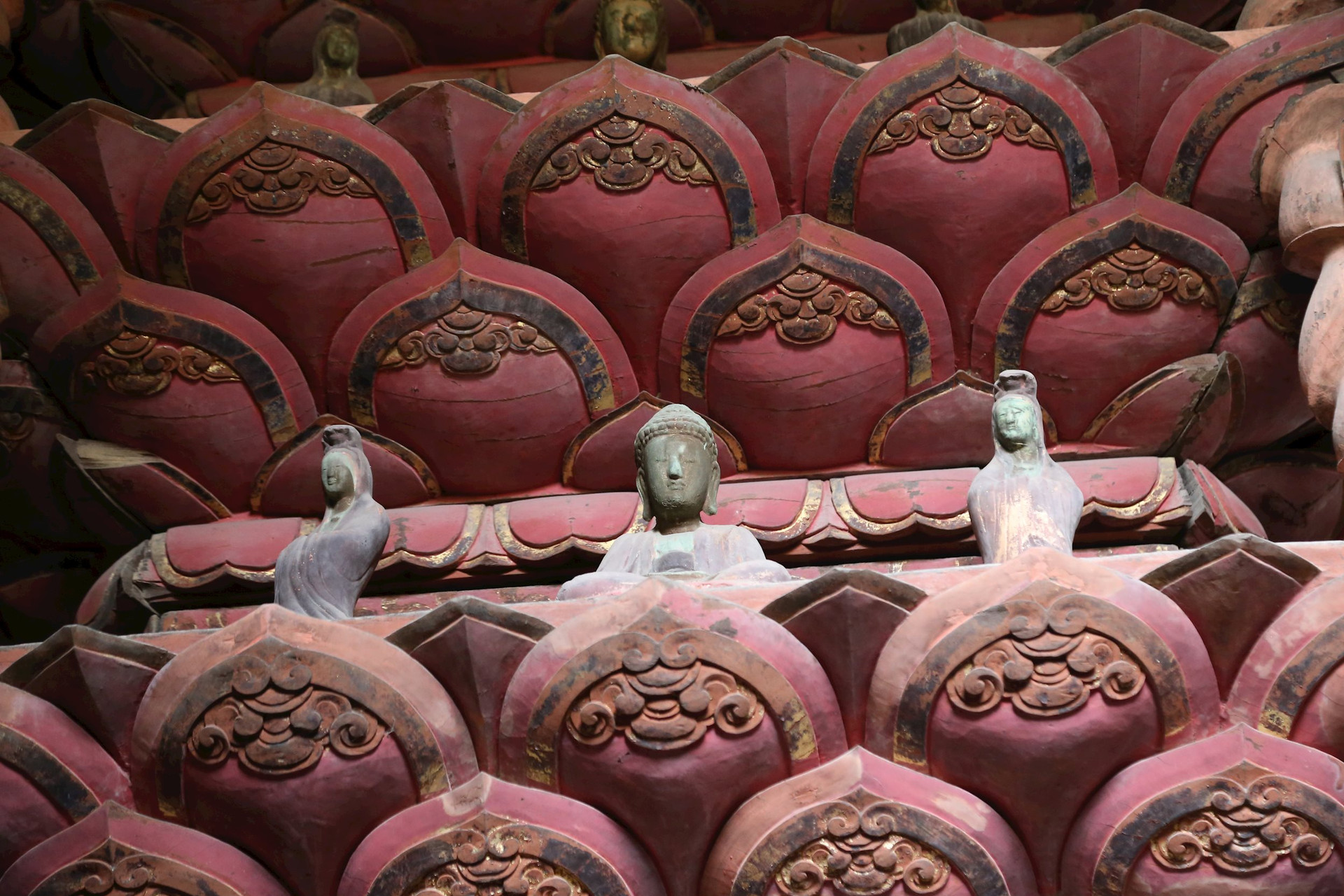
In total, the Nine-Piece Lotus Tower of Giam Pagoda has 145 statues, with the Amitabha Buddha statue on the top floor. The Nine-Piece Lotus Tower weighs 4 tons. In the past, if combined forces were used to push the tower, it would rotate in a circle.
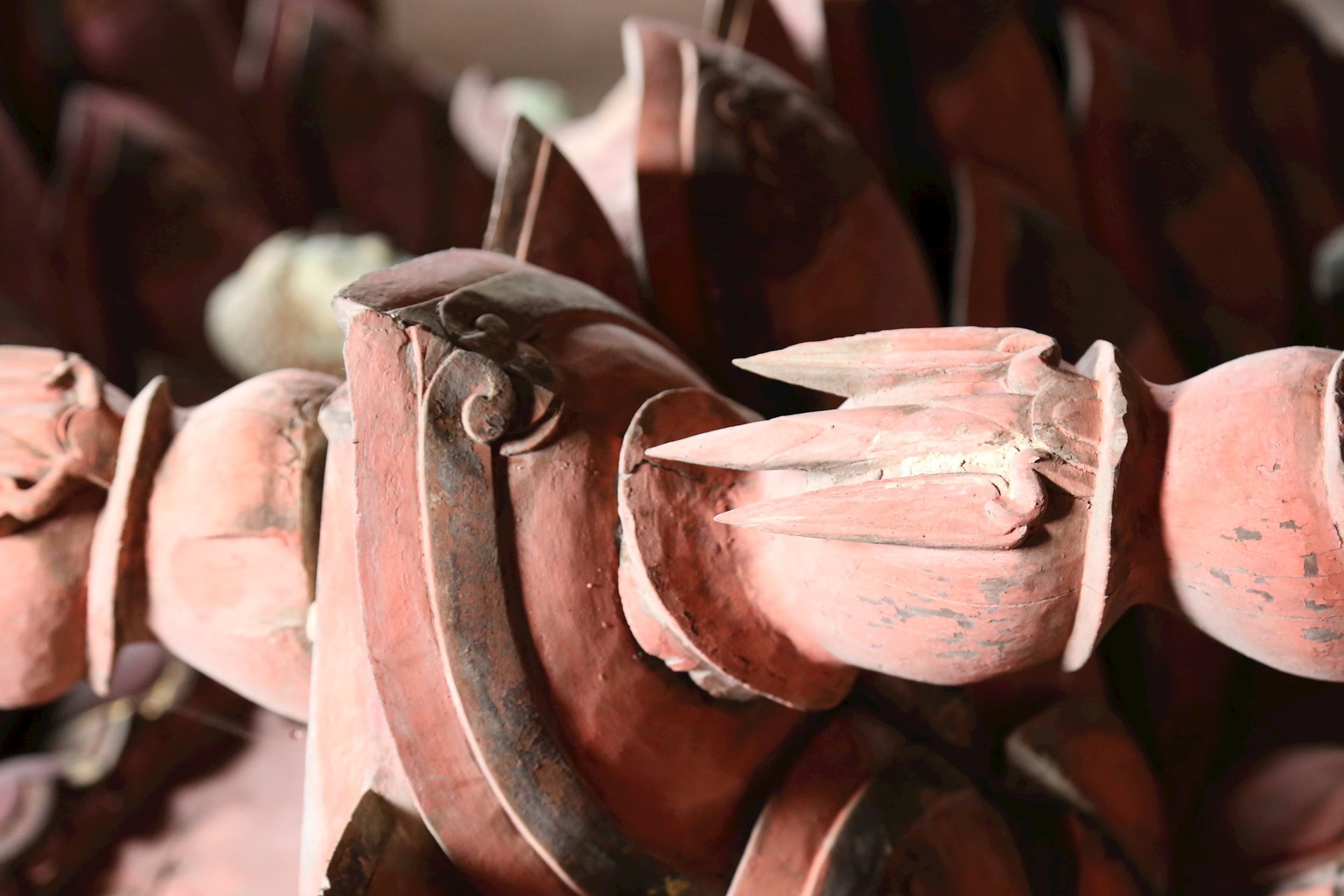
In addition to the lotus flower - a symbol of Buddhism, the image of bamboo is also clearly displayed on the Nine-Plate Lotus Tower. The details are all very sharp and harmonious in the overall unique architecture.
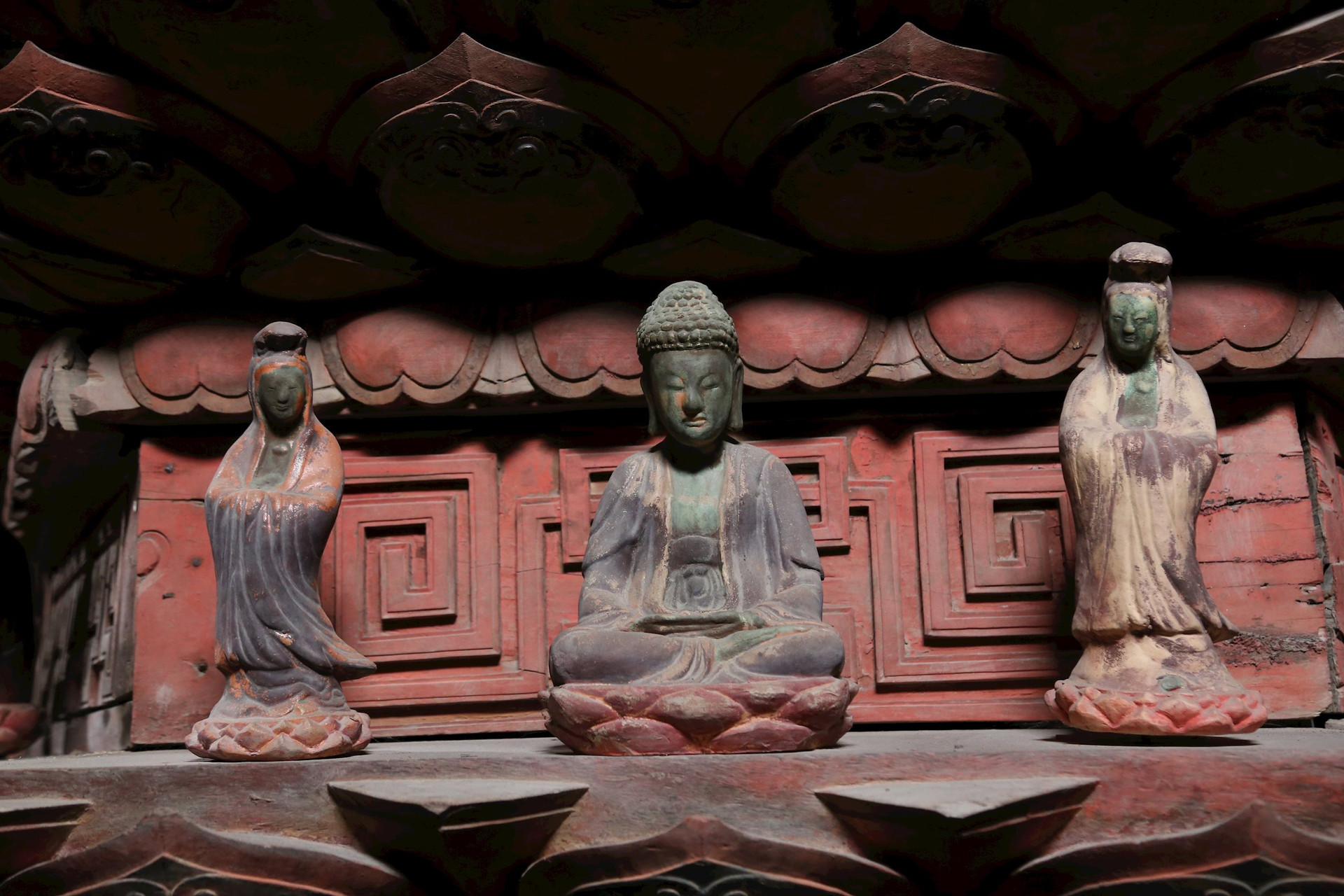
Right in front of the Nine-Piece Lotus Hall of Giam Pagoda is a large Buddha statue covered with the color of time. The statue stands silently in the lingering incense, adding to the mysterious beauty of the Nine-Piece Lotus Hall, a national treasure.
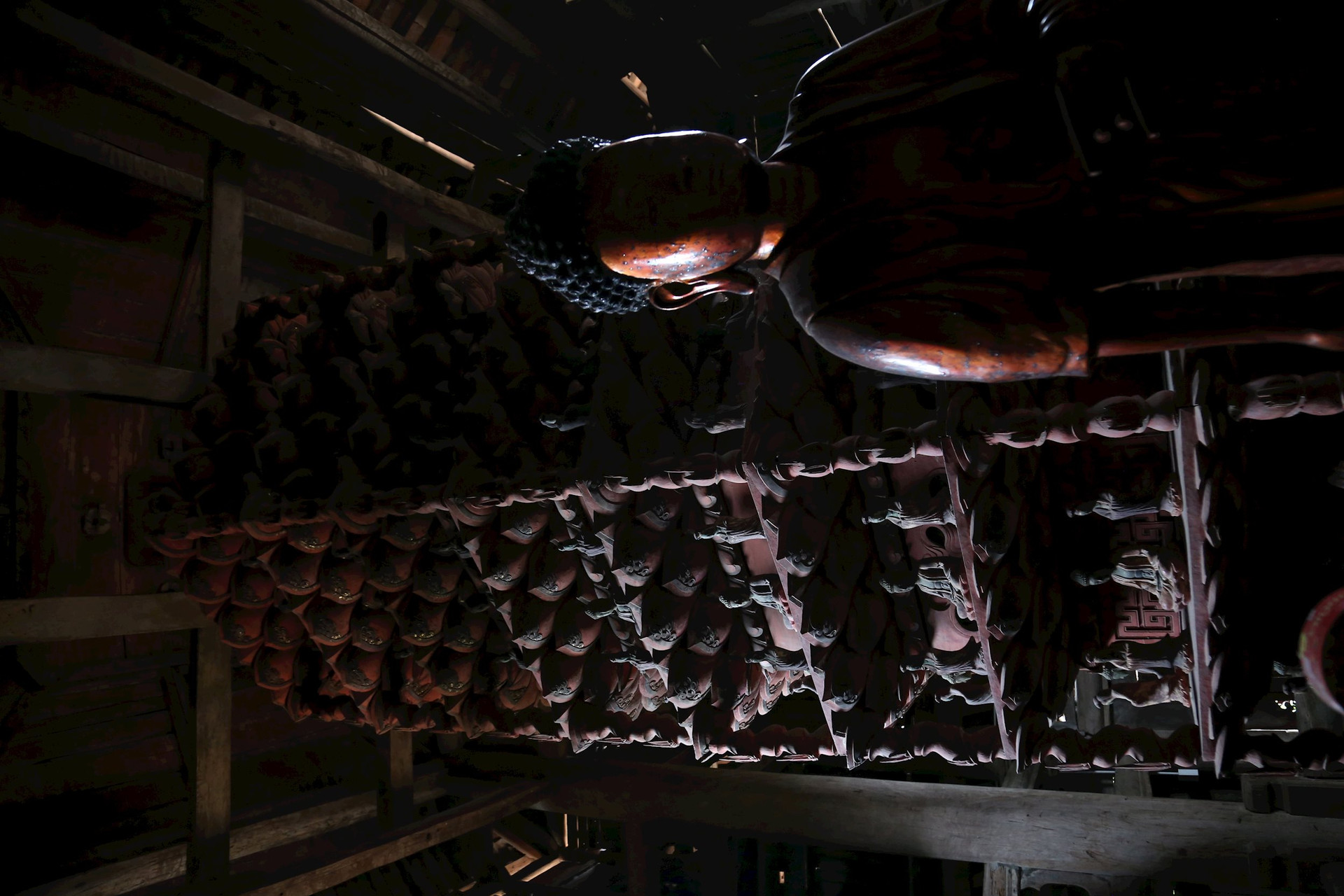
Giam Pagoda is the place to worship the great physician Zen master Tue Tinh, who was originally from Cam Vu commune (in the same district of Cam Giang) but practiced at Giam Pagoda. Here, he built medicinal gardens and turned the pagoda into a place to treat and save people. In the ancestral house of Giam Pagoda, there is a statue of the great physician Zen master Tue Tinh and every day people burn incense to commemorate the merits of the saint of medicinal herbs - the founder of contemporary Vietnamese traditional medicine.
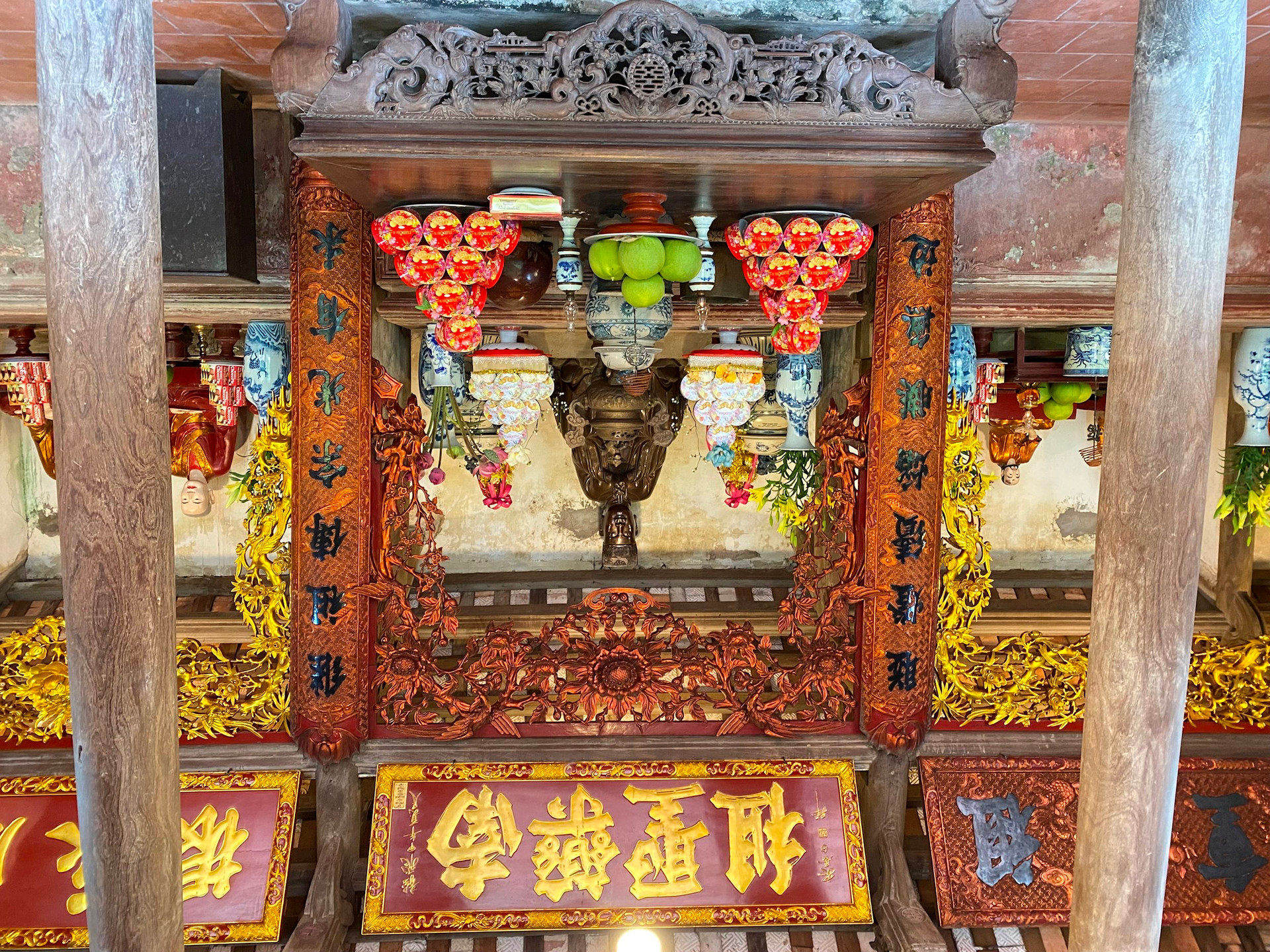
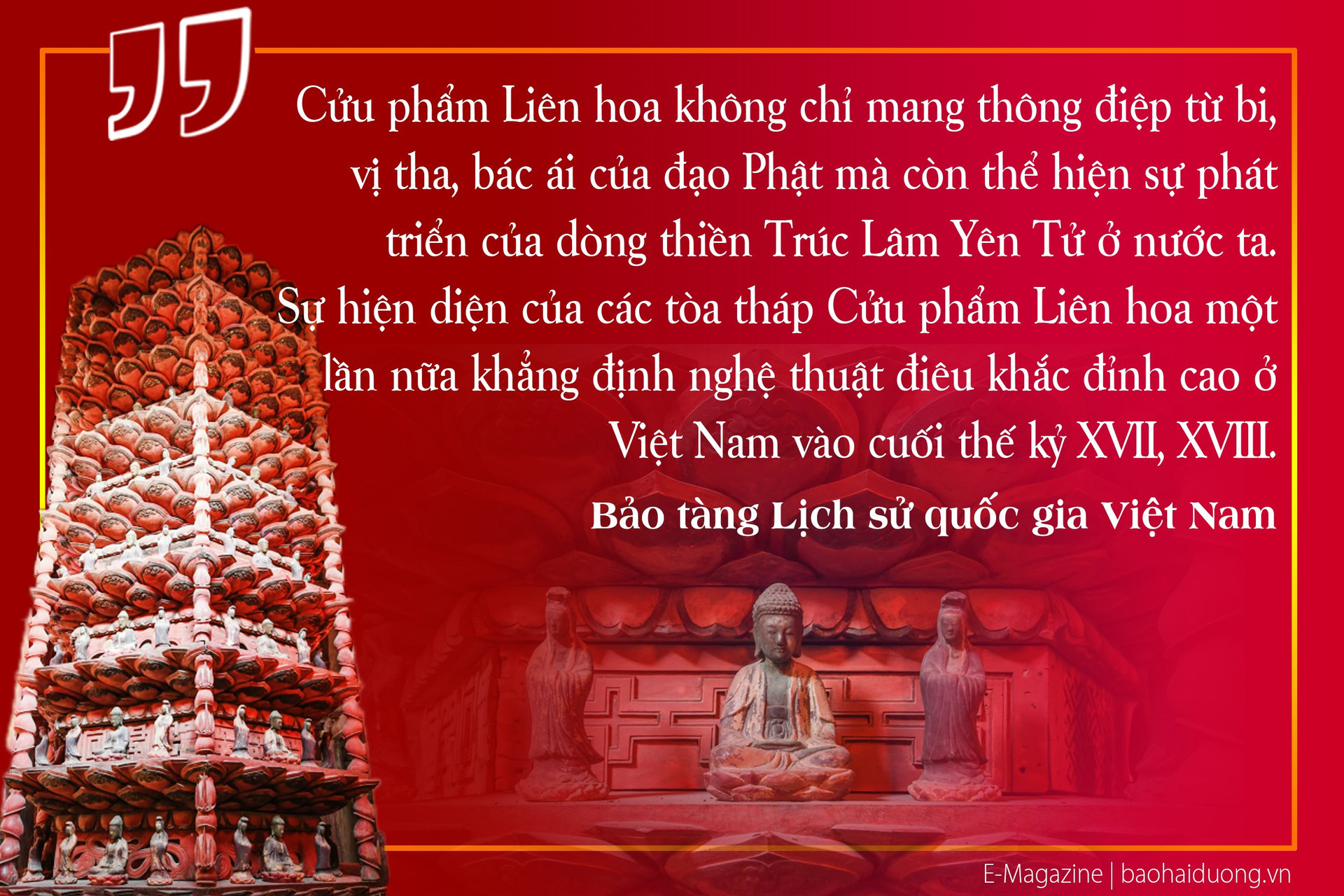
Not only is it a great historical site, Giam Pagoda and Temple still preserve a large number of valuable relics and antiquities. In addition to the Nine-Piece Lotus Hall with special architectural and artistic value, the pagoda also preserves two large bronze bells cast in 1762 and 1848. 16 stone steles dating from the 17th - 19th centuries record the construction, restoration, embellishment, casting and creation of Buddha statues at Giam Pagoda. These are not only valuable documents for studying the history of the formation and development of the relic, but also demonstrate the interest of the people and the government of the Le and Nguyen dynasties in the historical site of Nghiem Quang Tu.
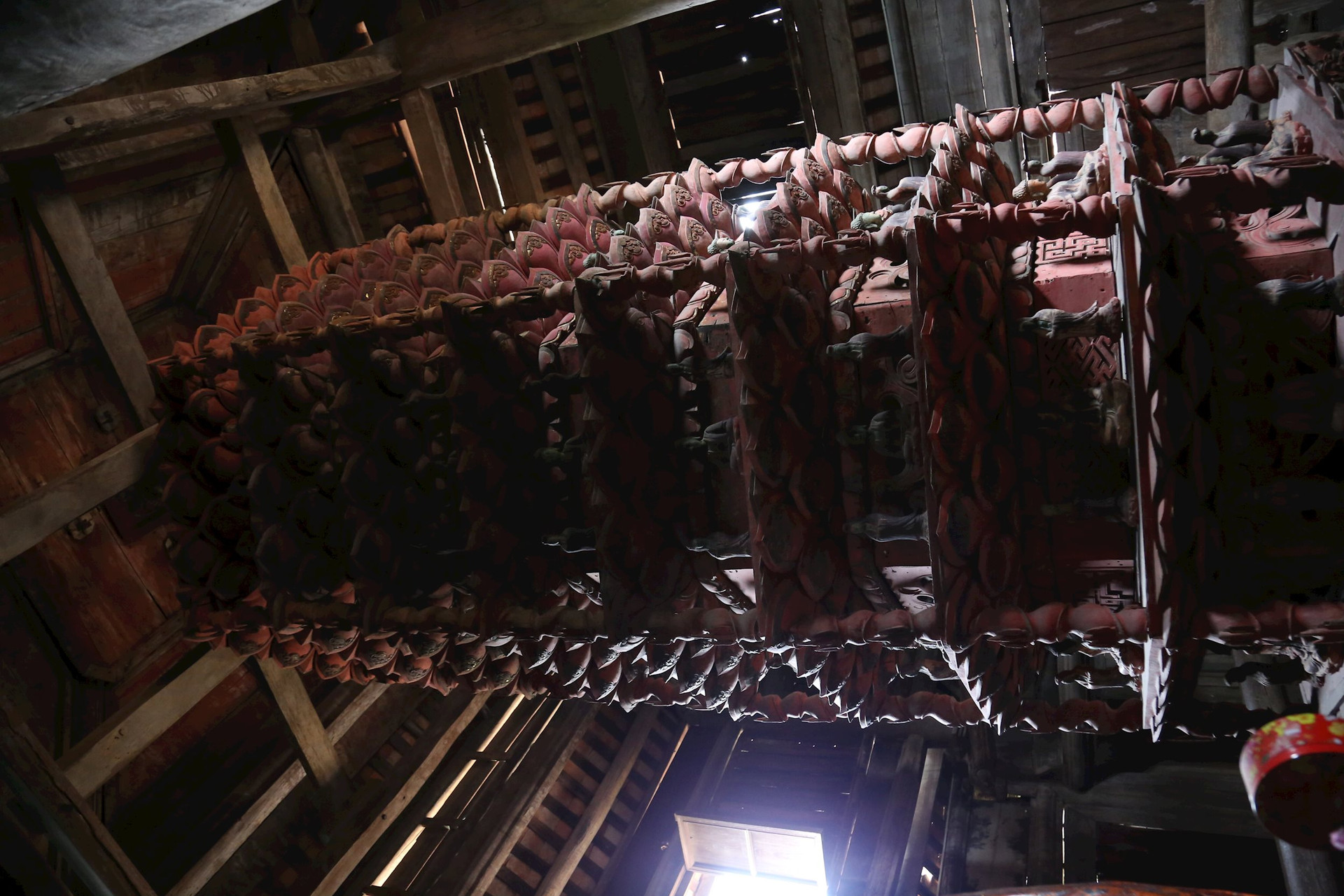
In Hai Duong, there is also the Nine-Piece Lotus Temple of Dong Ngo Pagoda in Cap Nhat Village, Tien Tien Commune (Hai Duong City). The Nine-Piece Lotus Temple of Dong Ngo Pagoda and Giam Pagoda are 2 of the total 8 national treasures of Hai Duong up to the present time.
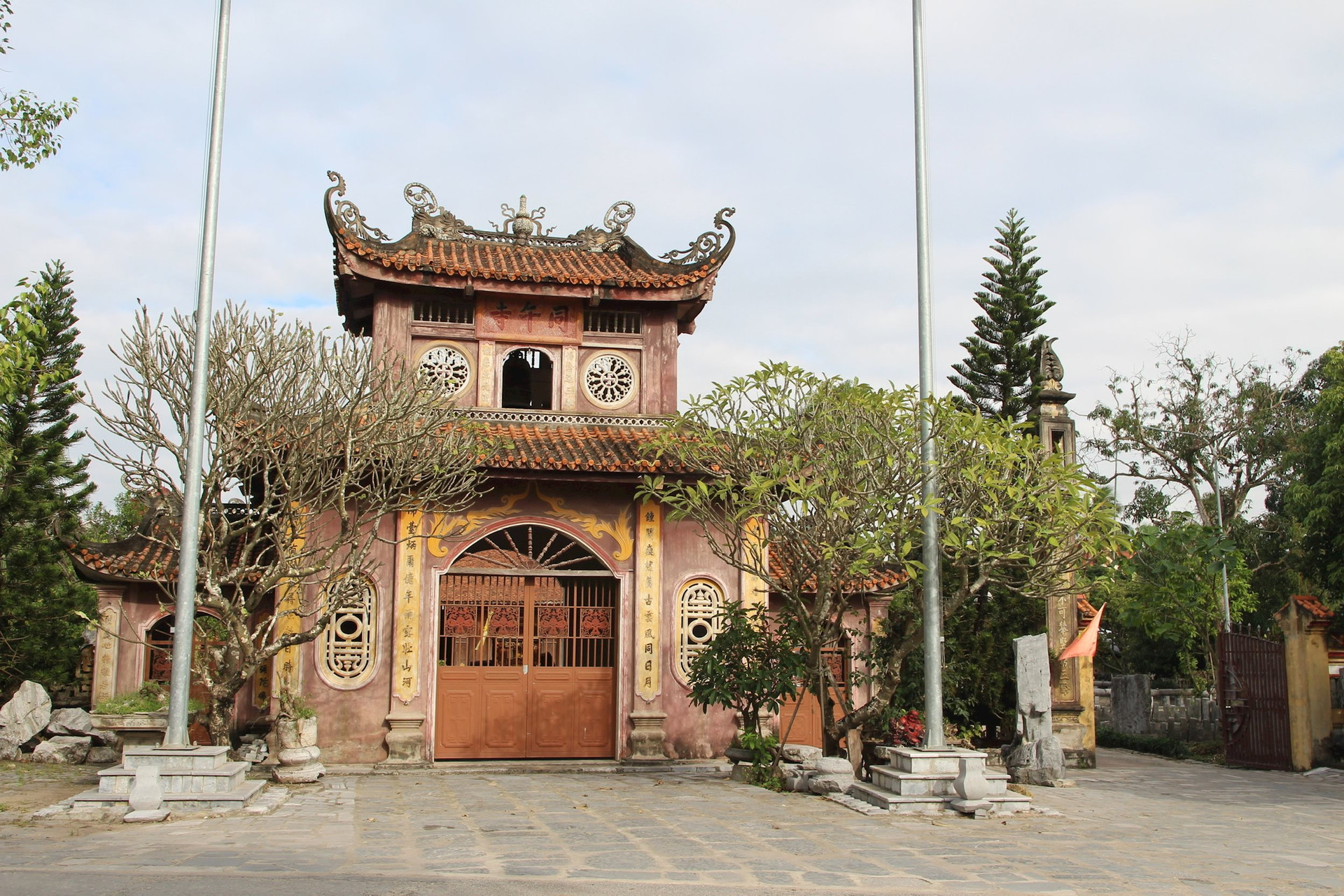
According to the inscription on the roof of the pagoda: "Thai Binh nhi nien thua Khuong Viet chi truyen ha edict tao tu. Dai Chinh nguyen nien sac ti ky ly tu Dao Chu tru tri", Dong Ngoc pagoda was built by monk Khuong Viet in 971. In 1530, monk Dao Chu was the abbot here and restored it. The pagoda was restored many times during the Ly, Tran, Le, and Nguyen dynasties. This used to be a major Buddhist center of the Truc Lam Yen Tu Zen sect and is one of the two oldest pagodas in Hai Duong.
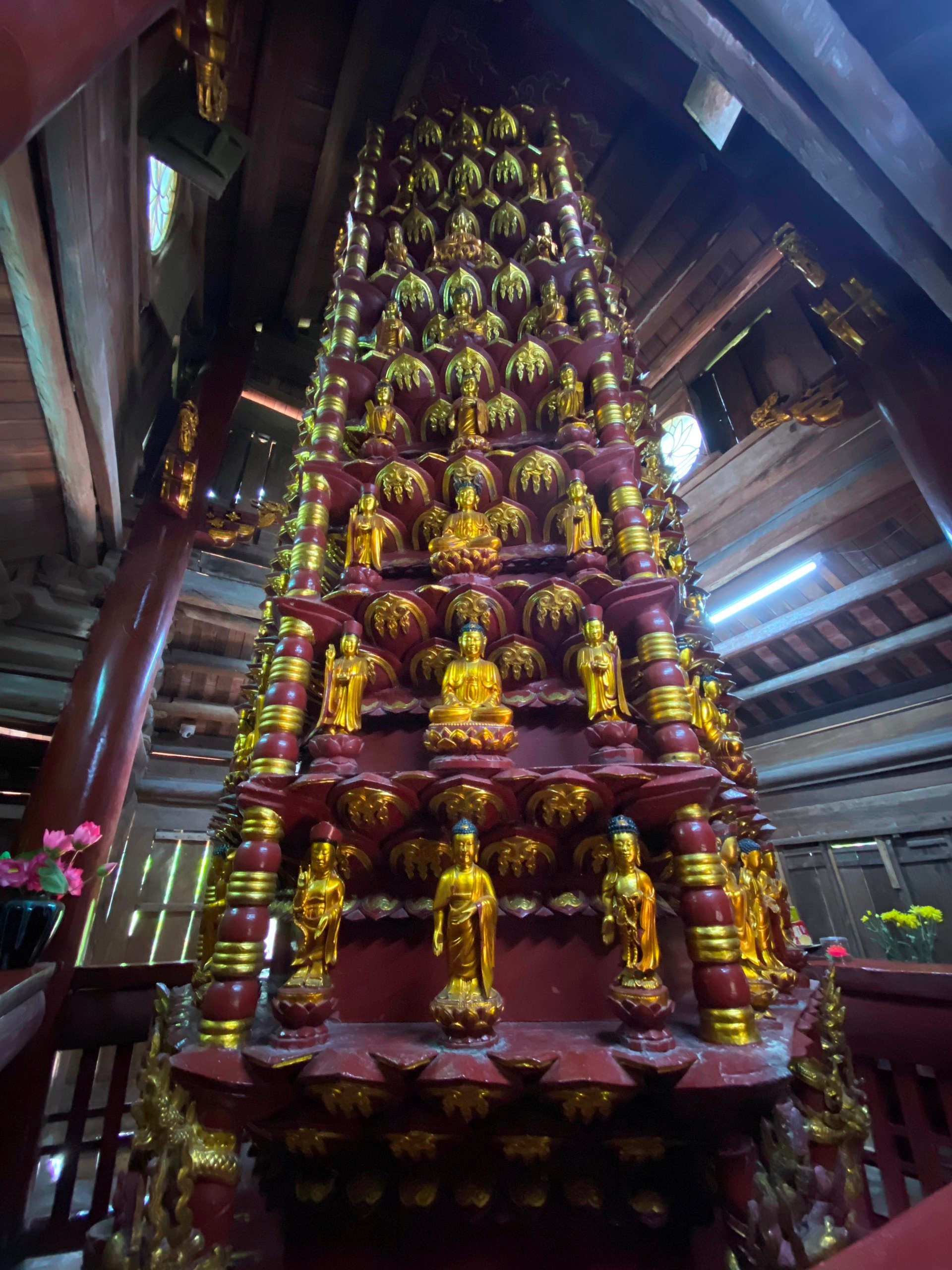
The Nine-Piece Lotus Pavilion of Dong Ngo Pagoda is located between the Tam Bao and the Patriarch's House. The Nine-Piece Pavilion has an area of 69 square meters, inside is a Nine-Piece Lotus Pavilion 5.7 meters high, with a cross-section of 6 equal sides, 9 floors symbolizing 9 lotus flowers stacked on top of each other. Each side has 3 Buddha statues, in the middle is Amitabha Buddha, on both sides are statues of Bodhisattva Avalokitesvara and Bodhisattva Mahasthamaprapta, also on the sides are statues of Amitabha Buddha and Manjushri, Bodhisattva Puxian, a total of 163 statues.
Compared to the Nine Lotuses of Giam Pagoda, the Nine Lotuses of Dong Ngo Pagoda no longer retains its solemn beauty. The motifs and statues have been gilded in red and gold during recent restorations. According to experts, the details on the Nine Lotuses of Dong Ngo Pagoda are not as sophisticated as those of Giam Pagoda. However, overall, this is still a very precious artifact, more than 3 centuries old, with great architectural and artistic value and is one of the 3 remaining Nine Lotuses in Vietnam.
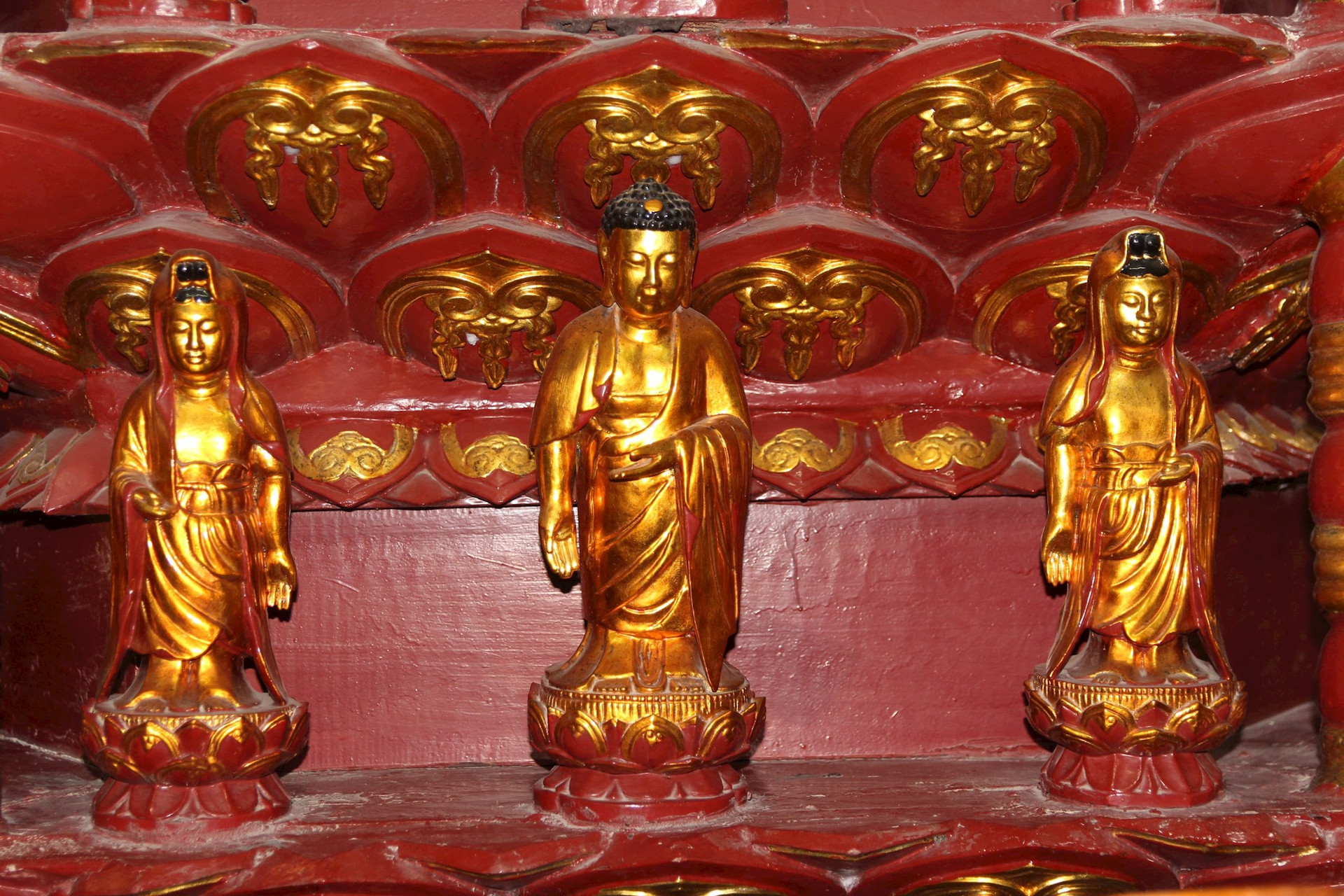
The statues at the Nine-Piece Lotus Pavilion of Dong Ngo Pagoda are made of wood. Overall, this is a unique architecture of the boundless, mysterious, layered world of Buddhism. The Nine-Piece Pavilion is placed on lotus-shaped stone pillars. Similar to Giam Pagoda, the Nine-Piece Lotus Pavilion of Dong Ngo Pagoda can no longer rotate. Of the 163 ancient statues on the Nine-Piece Pavilion, 60 have been stolen by thieves.
By 2016, the Nine-Piece Lotus of Dong Ngo Pagoda was recognized as a national treasure.


The Nine-Piece Lotus Tower is a unique Buddhist creation that exists only in Vietnam. This architectural work not only promotes the spirit of charity of Buddhism but also demonstrates the development of the Truc Lam Zen sect. The pagodas that built the Nine-Piece Lotus Tower are Buddhist centers or are associated with famous Zen masters. There is a belief that the Nine-Piece Lotus Tower is a mortar used to grind rice, the more it rotates, the more good things and wealth it brings. The appearance of the Nine-Piece Lotus Towers helped comfort people's spirits in society in the 17th-18th centuries, when civil wars occurred continuously.
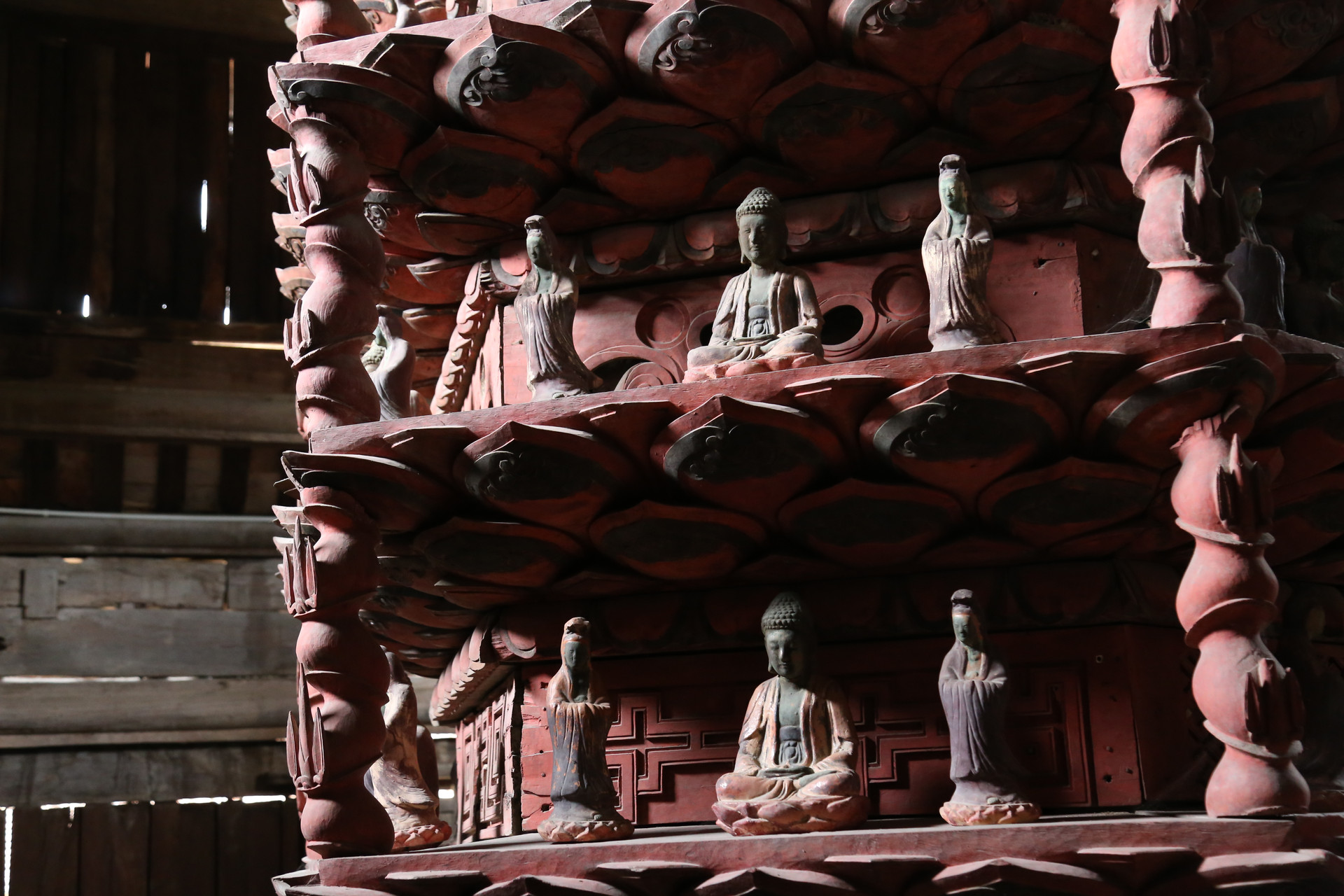
Despite their historical, cultural, architectural and artistic values, the two Nine-Piece Lotus Towers, national treasures in Hai Duong, cannot avoid the erosion of time, especially at Giam Pagoda. The evidence is that both of these Nine-Piece Towers cannot rotate, while the Nine-Piece Tower is an architecture that can rotate by human force, helping to comfort the spirit at a time when civil wars were constantly occurring.
Of the two houses, the one at Dong Ngo Pagoda is still in quite good condition. The house is sturdy and solid, while the one at the ninth floor shows few signs of erosion from time.
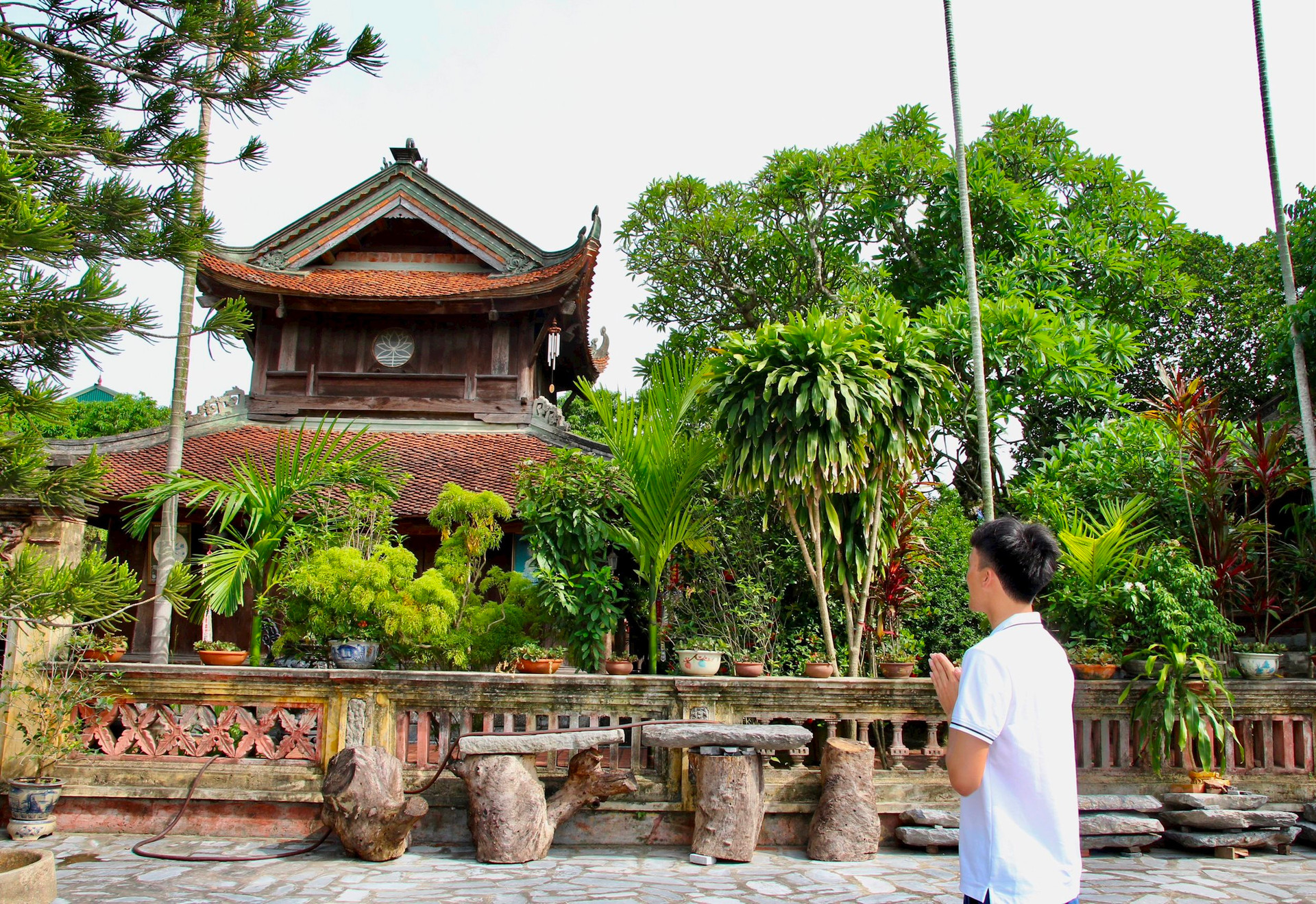
However, the pagoda's temple has seriously deteriorated and is very dangerous during the rainy and stormy season. Currently, the local authorities have had to reinforce the temple with steel columns around it. The tiled roofs on the right and back of the temple have been displaced and have holes. The pagoda has had to close one door in front and on the right of the temple to limit people from entering and exiting.
Venerable Thich Thanh Luong, abbot of Giam Pagoda, said: "Rainwater is like a saw of the sky. The pagoda's construction has been damaged, and rain and sun can directly affect the nine-grade building. We hope that the restoration and embellishment project of Giam Pagoda will be implemented soon to protect the value of the relic, especially the nine-grade building, a national treasure."
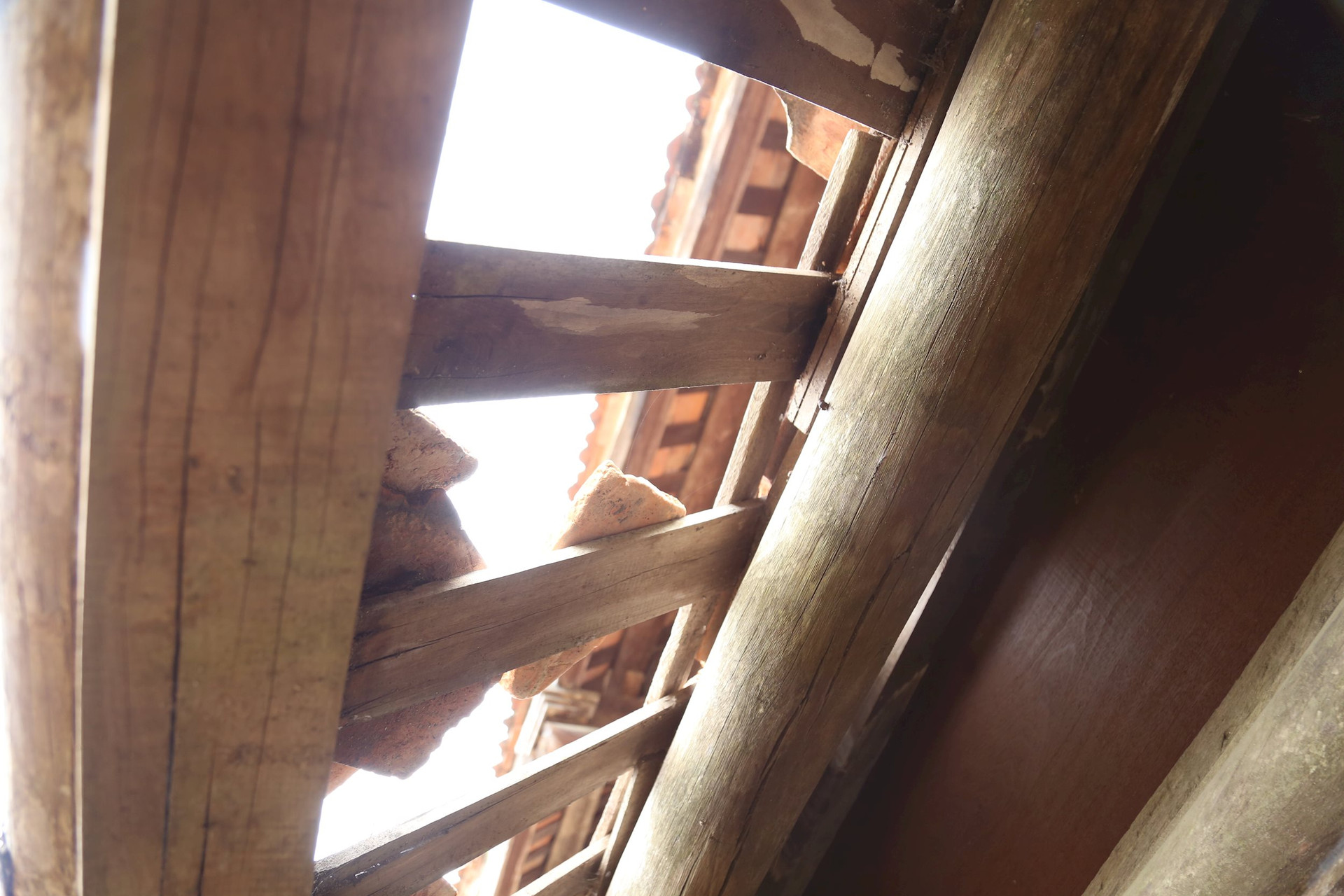
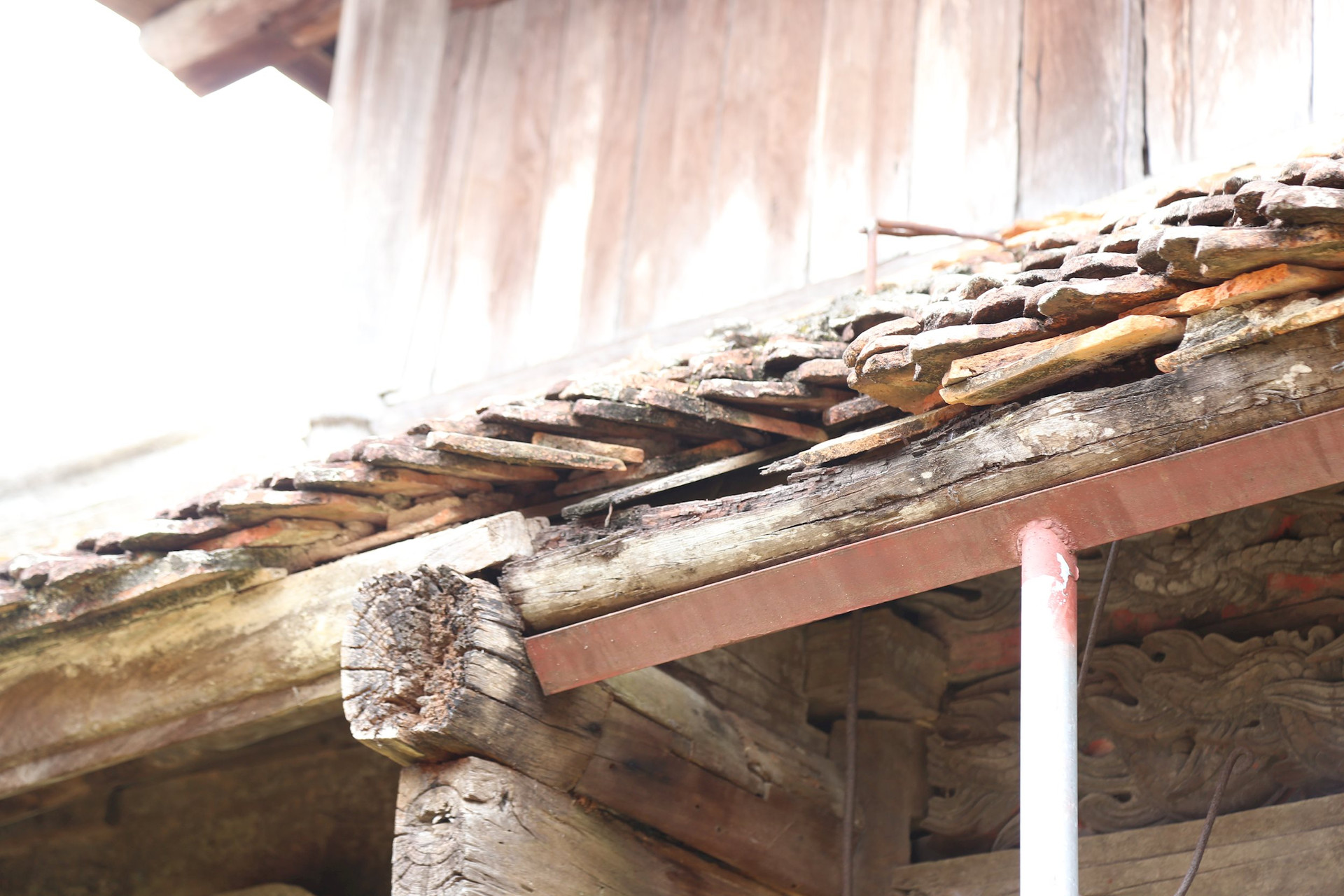
However, after more than 3 centuries, the wooden shaft has been displaced and has not been repaired. Therefore, the Nine-Piece Lotus Tower of Giam Pagoda cannot rotate. The pagoda also posted a notice "No rotation allowed" at the base of the Nine-Piece Tower.
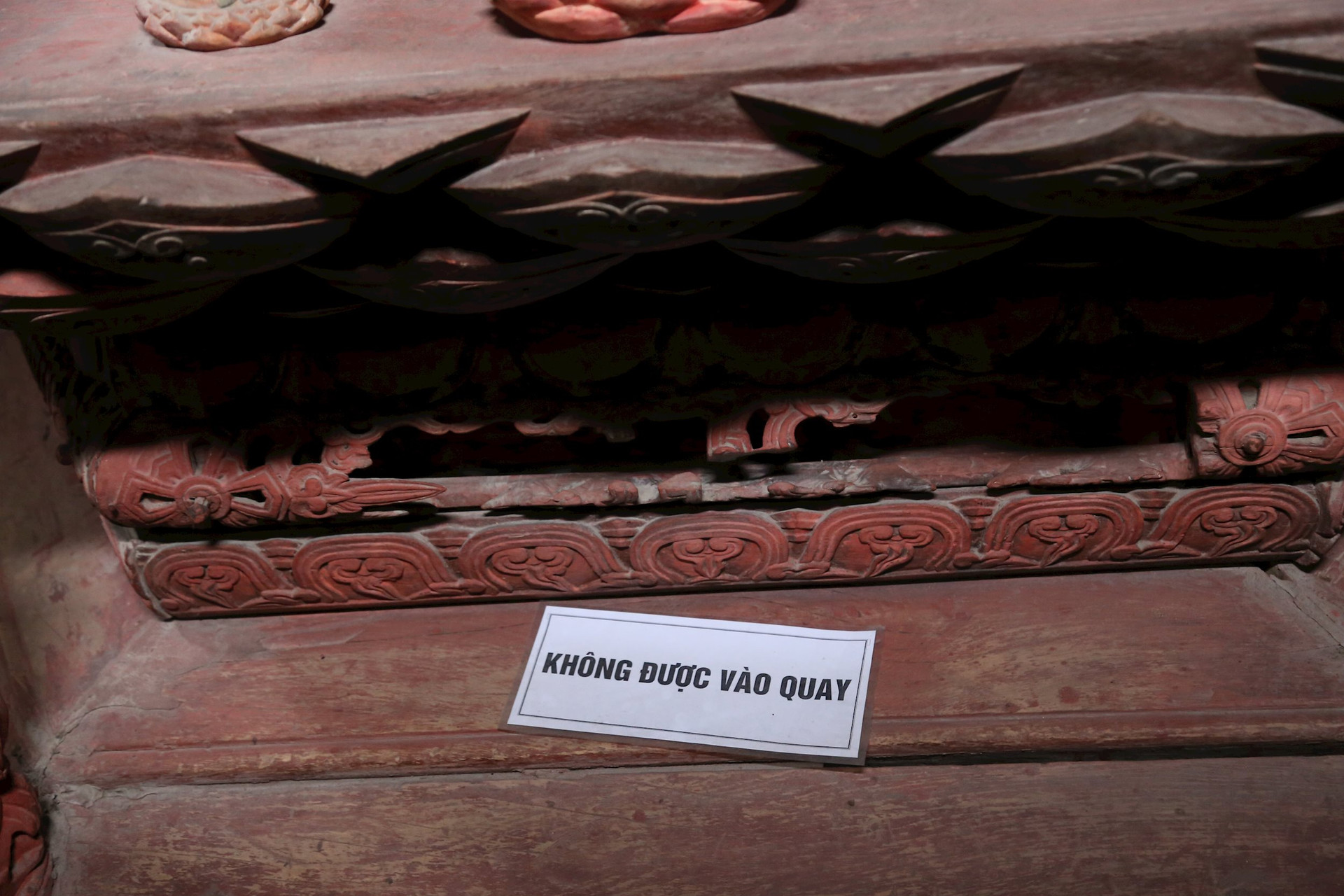
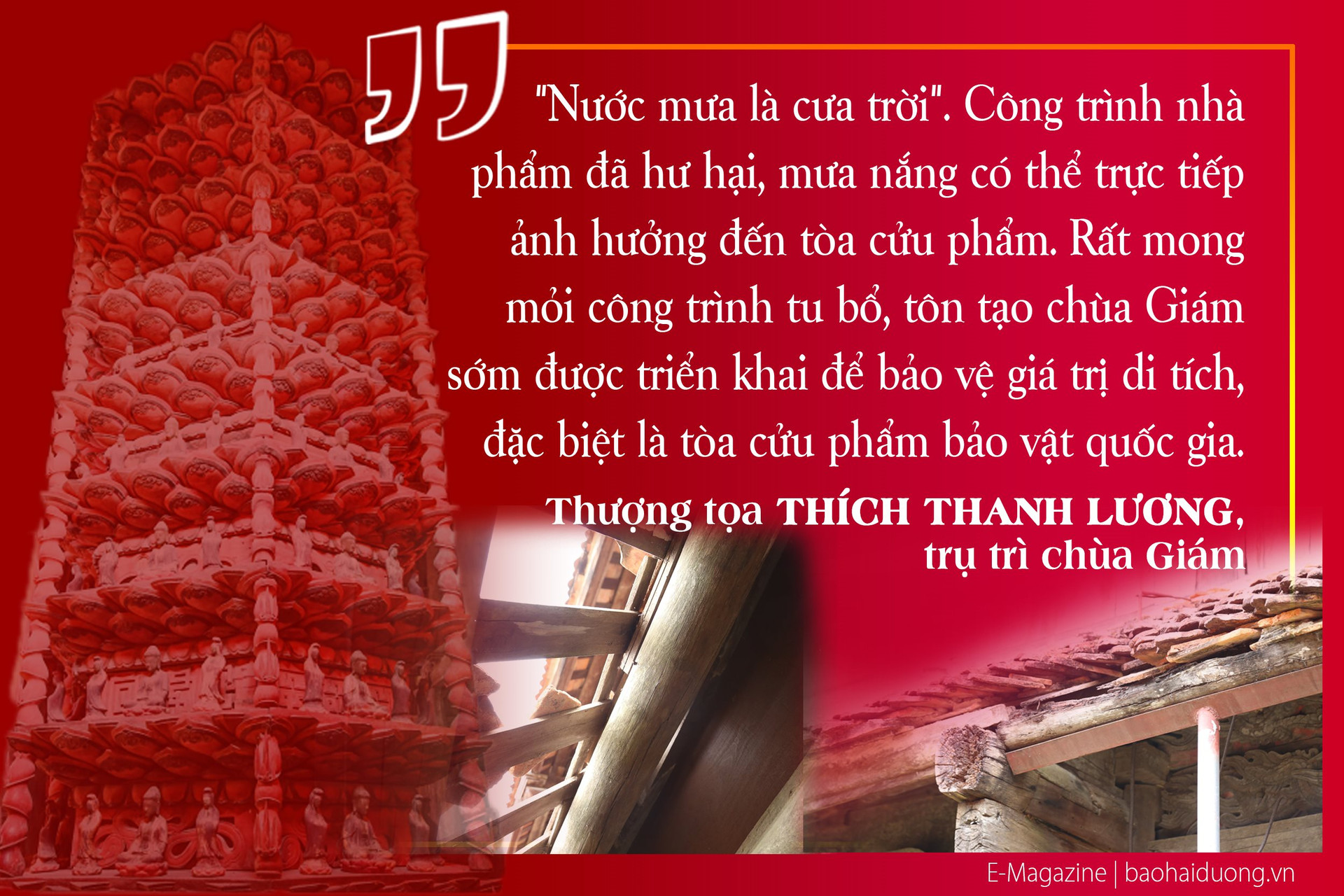
At the end of 2022, the Standing Committee of Hai Duong Provincial Party Committee approved the investment policy for the project to restore and embellish the special national relic Giam Pagoda, with a total estimated cost of more than 31.2 billion VND. The project implementation period is until the end of 2024, the investor is the People's Committee of Cam Giang district. This is a good sign for local people and tourists from all over.
According to the Sino-Vietnamese Buddhist dictionary, there are many different types of nine ranks in Buddhist scriptures. Nine ranks of lotus means nine levels of lotus, also known as Nine ranks of lotus, Nine ranks of pure land, or Nine ranks of peace. This is a symbolic image of the ranks of practitioners of Pure Land Buddhism, so it also has another name, Nine ranks of Pure Land. Each lotus platform in these ranks represents a different life, corresponding to different rebirth achievements. The higher the lotus platform blooms, the higher its rank, the purer it is, the closer it is to the core of Buddha nature.
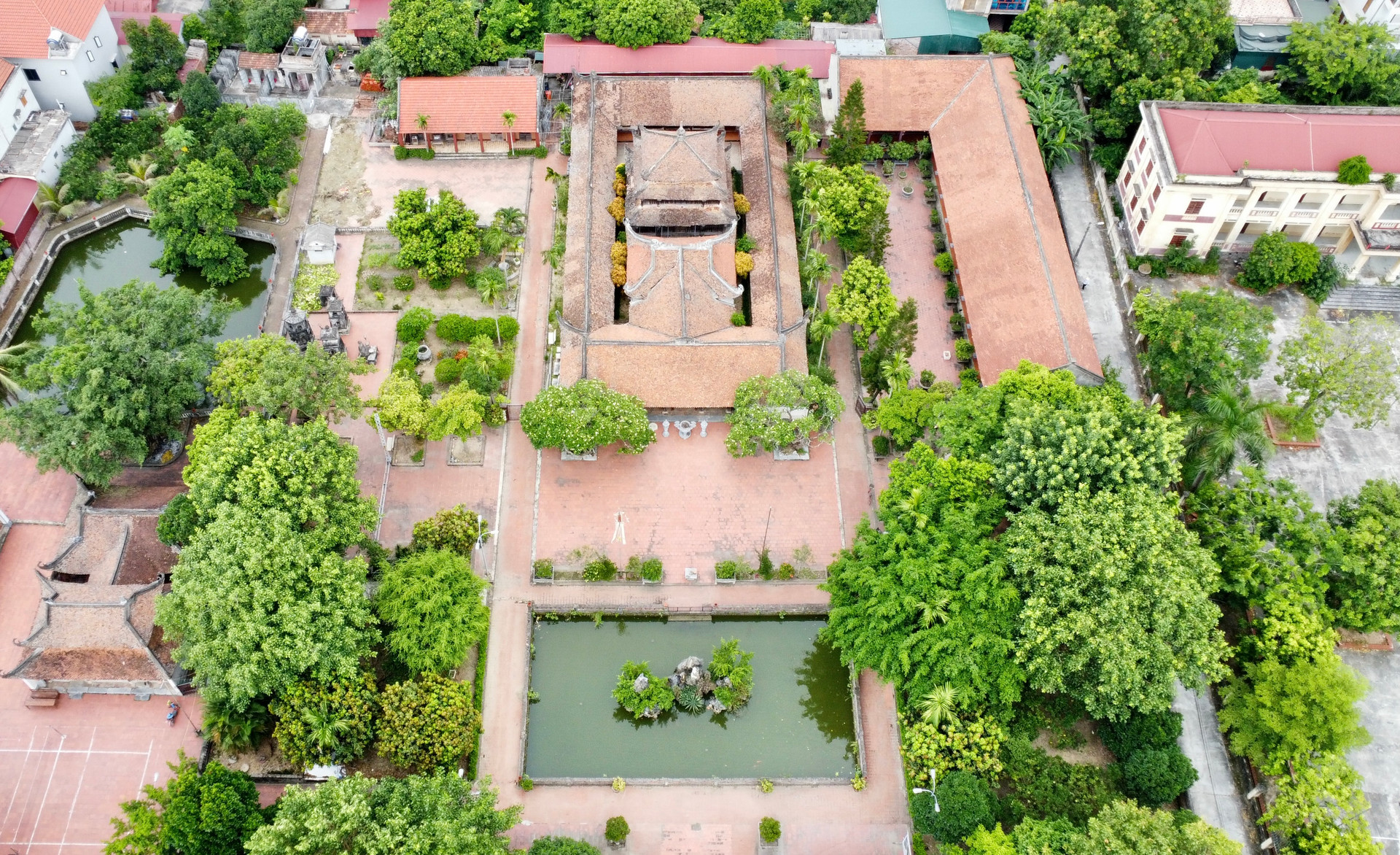
In the system of sculpture and architecture of Vietnamese pagodas and towers, the Nine-Piece Lotus Tower is a very special type of tower. The tower is enclosed in a three-story building, each floor has four roofs, designed in the shape of a hexagon or octagon with nine lotus floors, on an axis connecting the ground to the ceiling of the tower. At the top of the polygon, there are often supporting pillars designed to help the entire tower rotate easily.
The Nine-grade Lotus is a perfect symbol of the Buddhist world, a combination of many different symbolic values. However, the most important meaning of this image is to encourage people to always strive to surpass themselves, to do good and abandon evil.
Therefore, the existence of 2 out of 3 national treasures, the Nine-Piece Lotus in Hai Duong, is extremely valuable and needs to be preserved and protected.
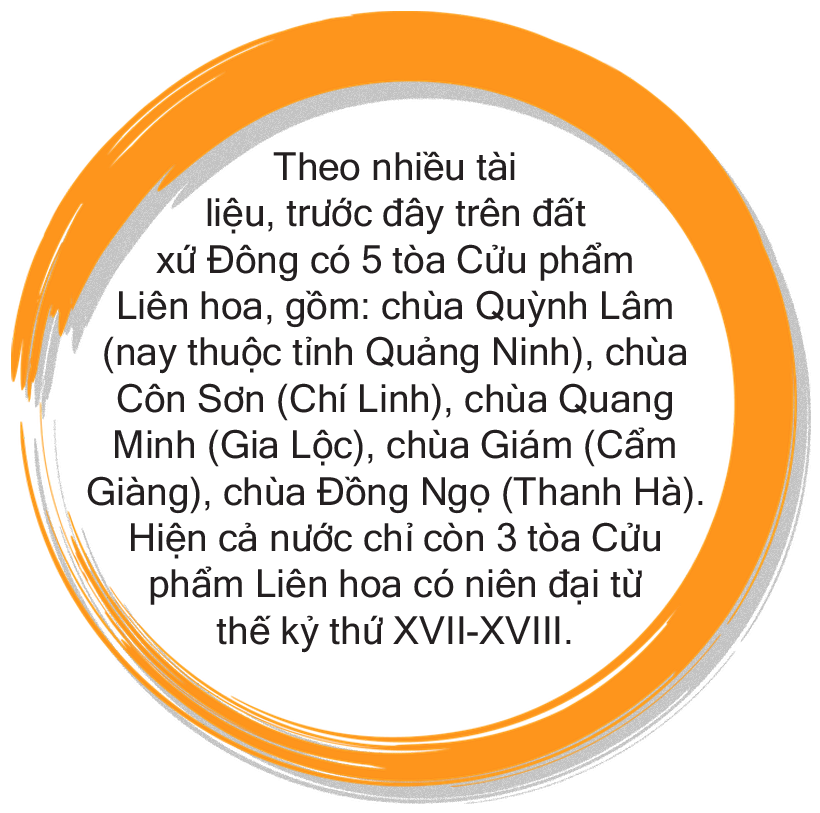
Content:TIEN HUY
Infographics:TUAN ANH
Present:LIBRA